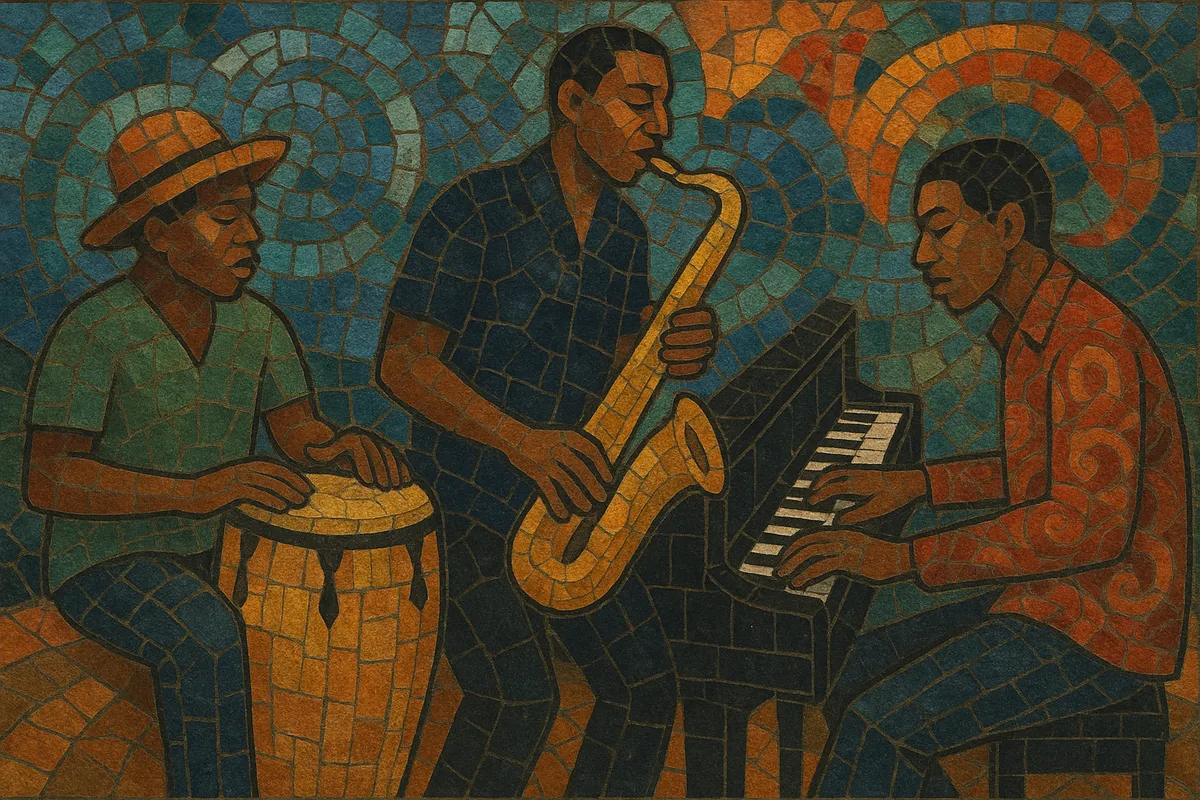Kréyol djaz (Creole jazz) is a modern Caribbean jazz movement rooted in the French Antilles that blends the rhythmic DNA of Guadeloupe and Martinique with contemporary jazz language.
It fuses gwo ka and bèlè drum traditions, the buoyant swing of biguine and mazurka, and post-bop/modal harmony, often carried by piano- or sax-led ensembles. The result is music that grooves with unmistakably Antillean cadences while embracing the improvisational freedom and harmonic richness of jazz.
Performances alternate between lyrical, song-form pieces sung in Creole and instrumental vehicles with head–solos–head structures, all propelled by hybrid drum-set/ka-percussion patterns and supple bass lines.
The foundations of kréyol djaz stretch back to the biguine-jazz exchanges of the 1930s and 1940s, when musicians from Martinique and Guadeloupe carried Antillean dance rhythms to Paris and interacted with American jazz. Biguine, mazurka, and traditional drum practices (gwo ka in Guadeloupe and bèlè in Martinique) formed a rhythmic bedrock that would later be recombined with modern jazz harmony. The zouk explosion of the late 1970s and 1980s further normalized Creole rhythmic identities in contemporary popular music, setting the stage for a jazz-forward synthesis.
By the 1990s, a distinct "kréyol" approach to jazz coalesced: keeping Creole language, drum timbres, and dance feels at the center while adopting post-bop/modal vocabularies. Pianists and rhythm sections began integrating ti-bwa stick patterns, ka drums, and bèlè call-and-response into small-group jazz formats, moving beyond occasional “Caribbean-flavored” tunes to a fully articulated style.
In the 2000s, artists from Guadeloupe and Martinique crystallized the idiom on international stages and recordings. Albums explicitly referencing gwo ka/bèlè rhythms, Creole titles and lyrics, and collaborations with New York and Paris jazz communities helped the sound travel. Festivals in the Antilles and France amplified the aesthetic, while new generations of pianists, drummers, and horn players adopted ka-informed grooves and Creole songwriting within contemporary jazz frameworks.
Kréyol djaz now denotes a vibrant continuum—equally at home in acoustic trios and electric projects—that honors Antillean heritage while engaging modern jazz sensibilities. Its signatures include hybrid percussion, diatonic–modal harmony colored by extended chords, and an emphasis on melodic storytelling in Creole.


